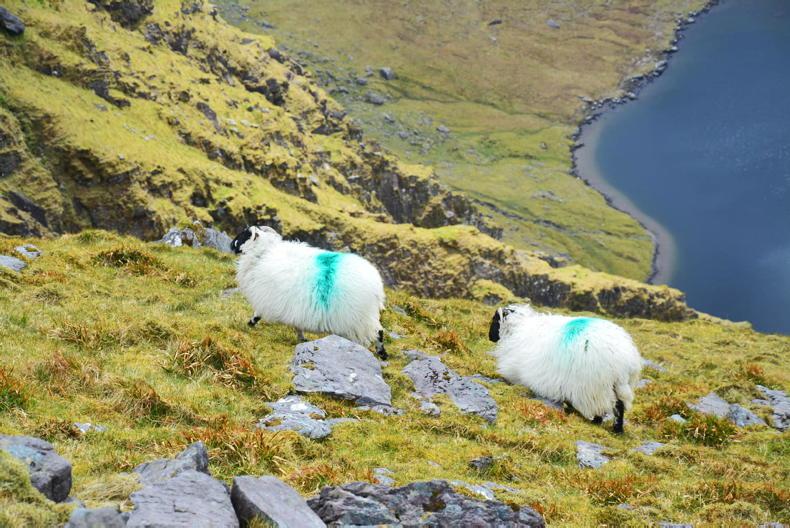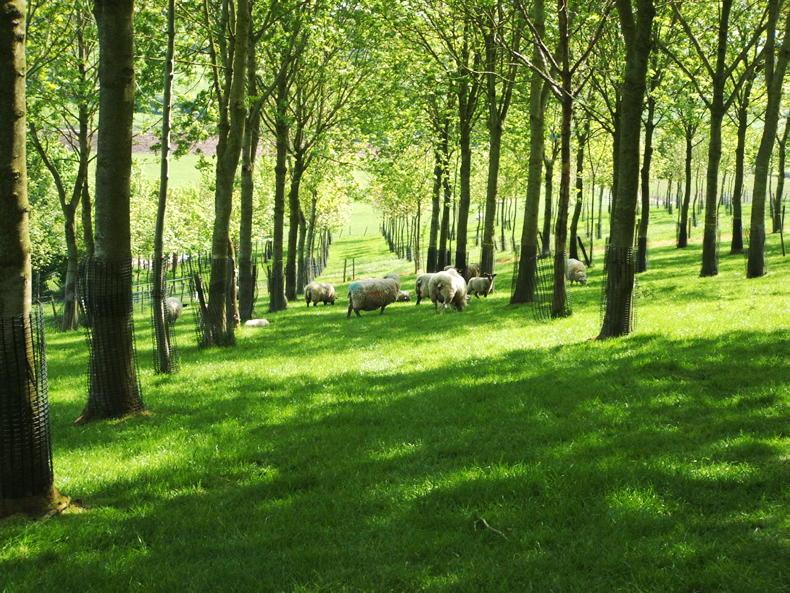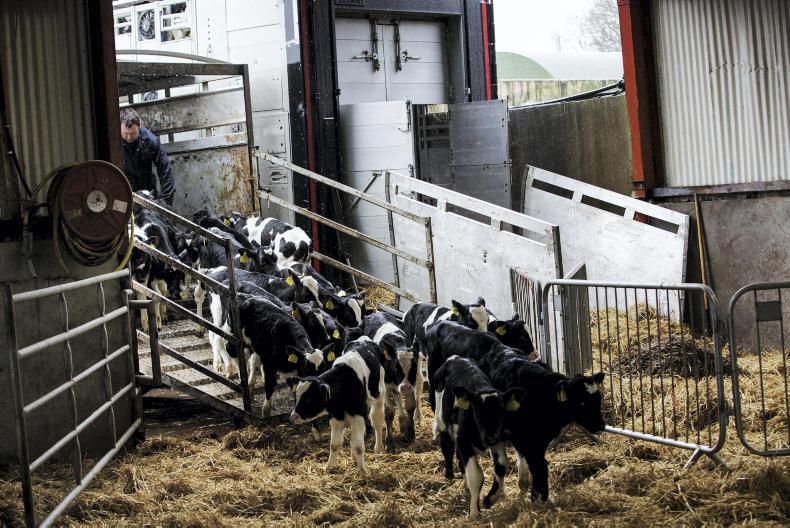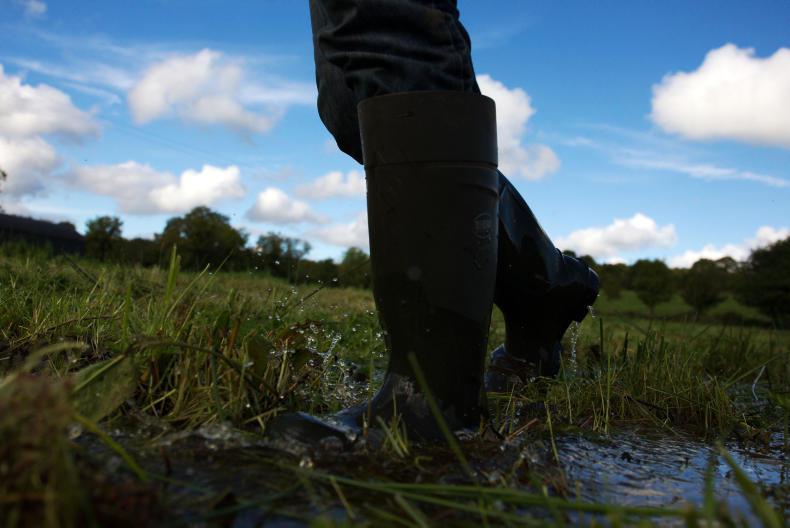Smaller farms on poorer land and those using less intensive production methods are set to be the big winners under the European Commission’s vision of what Irish farm payments should look like under the next Common Agricultural Policy (CAP).
Published at the end of last week, continued convergence of entitlements, front-loading of payments and stronger links to environmental and climate action are all among specific recommendations made by the Commission to Ireland.
Tailored suggestions were made to all 27 member states as the reform of Europe’s farm policy steps up a gear.
The Commission’s intervention in the strategic plan design process is to ensure countries address targets set out in the European Green Deal, as well as the nine specific objectives of the CAP.
Agriculture’s contribution to the Green Deal, set out in the Farm to Fork and Biodiversity strategies, includes goals for the use of pesticides, sale of veterinary medicines, nutrient loss, area under organic farming and high-diversity landscape features.
Continue convergence and start front-loading

Sheep grazing areas of natural constraint (ANC). \Thomas Gilleran
To improve the viability of farms, particularly medium-sized farms and farms in areas facing natural constraint, the fairness of direct payments must be increased, the Commission said.
The link to historical reference periods means the concentration of Irish payments is relatively high, with 20% of farmers on 49% of the land receiving 56% of direct payments.
Further payment convergence is put forward as the main tool to achieve fairer distribution. In the next CAP, all entitlements are to reach a minimum value of 75% of the national average, up from 60% at present.
Department of Agriculture modelling shows 59,453 farmers would gain while 54,567 farmers would lose under this scenario.
The Commission also recommends making use of a new fund called the complementary redistributive income support for sustainability (CRISS). It will require countries to offer front-loaded payments, a measure that was previously voluntary.
It will be financed from the direct payment envelope and the proceeds of measures such as payment capping, proposed to be in the region of €100,000.
Ireland can decide the number of hectares and the payment per hectare to offer.
Payments for environmental action

Organic farming like the pictured organic sheep farm in Co Galway will be mainstreamed in thenext CAP. \ David Ruffles
While the Commission highlighted several of Ireland’s environmental advantages such as the high prevalence of grassland, large areas of carbon-rich peat soils, and a network of biodiversity rich hedgerows, it also pointed out several major issues.
Chief among them were rising greenhouse gas emissions, missing targets for cutting ammonia emissions, nutrient discharges into water and damage to species and their habitats.
Substantial growth in livestock numbers is one of the main reasons for this, the Commission said. The national herd has increased by 11% since 2010 to 6.6m head with a 40% increase in dairy cow numbers.
A move towards “more sustainable farming practices” should be encouraged by linking income support to environmental and climate-related action. The next CAP is set to create this link by making 20% to 30% of direct payments contingent on taking part in “eco-schemes”.
Possible eco-schemes

Agroforestry, essentially forestry and farming in the one field, will also be a focus for farm payments.
The Commission has suggested a number of possible eco-schemes including carbon farming, agro-forestry, precision nutrient management and extensive production methods.
In Ireland, the Commission wants to see a widespread improvement in nutrient management through better use of chemical fertilisers and manure. Making payments conditional on meeting certain standards, particularly in hotspot areas, along with funded schemes to support nutrient management plans is suggested. The Commission identified Ireland as having a low coverage of trees (11% versus the EU average of 40%) along with having a need to improve the species mix. It calls for a greater focus on tree-planting with species mixes that are appropriate for biodiversity, adaptation to climate change and carbon sink capacity. The Commission repeatedly referenced the low levels of organic farming in Ireland. It says it should have a greater role to play in the agricultural sector and asks that significant efforts be made to increase the area farmed organically, currently just over 2% of utilised agricultural area.More can be done to improve the conservation status of grasslands and heathlands, the Commission says. It suggests rules and schemes that maintain extensive grazing, extend the area of species-rich grasslands, adapt mowing practices to habitat needs and prevent harmful burning of vegetation.Markets for male dairy calves

The Commission wants to see more home markets for Irish calves that are traditionally exported to the continent. \ Donal O'Leary
A major focus of the Commission and the Farm to Fork strategy is improving animal health and welfare.
The main issue identified in Ireland is around male calves from dairy herds. The Commission says that action is needed to “improve the viability of male calves from the dairy herd in locally based production systems”.
Approximately 150,000 calves are exported live destined for continental veal units every year. It is clear that the Commission wants to see a route to market developed for these calves in Ireland.
The Commission also wants to see progress made on ending the routine practice of tail docking in pigs.
Protection for
Ireland’s peatland

Ireland is home to extensive peatlands which cover more than 20% of the total land area, making Irish soil a huge store for carbon. However, the Commission is concerned at the condition of these soils, with 80% considered degraded.
It says this must be halted and the restoration of peatland encouraged. New protections for peatlands and wetlands will be introduced in the next CAP, making it a basic requirement to receive a direct payment.
The Commission sees the potential for Ireland to offer schemes to encourage the rewetting of drained land or to reduce the management intensity on this land.
What happens next?
The publication of the Commission’s recommendations marks an intensification of a long-running CAP reform process. The overall CAP package is expected to be signed off in spring 2021, at which point the focus will switch to the national strategic plans.
Ireland now has 12 months to 1 January 2022 to draft, finalise and submit its plan. The Commission will then have until 1 January 2023, when the next CAP will begin, to approve the plan.
Over the next two years, there will be intense discussion first at national level between the Department and stakeholders including farmers, farm organisations and the wider industry. There will then be back-and-forth discussions between the Commission and the Department.
The recommendations are not legally binding. However, the strategic plan put forward by Ireland will require approval.
While Ireland is free to deviate, the Commission warned it will use the recommendations “as an important reference document to assess the plans”.
Timeline
December 2020: Commission publishes its country-specific CAP recommendations.Spring 2021: CAP reform negotiations to conclude and shape of the next CAP finalised.January 2022: Ireland to submit is national strategic plan to the European Commission for approval.December 2022: Commission to sign off on strategic plans for all 27 member states.January 2023: new CAP to begin.The Commission has made a series of recommendations to Ireland for the next CAP. They include:
Focus payments on smaller farmers and farms in areas facing natural constraint by continuing convergence and introducing front-loaded payments.Increase the links between direct payments and environmental and climate action to encourage the uptake of more sustainable farm practices. Consider offering eco-schemes to farmers that promote the use of nutrient management plans, the planting of trees, conversion to organic and more extensive farming management methods.Take action to improve the viability of male calves from the dairy herd in locally based production systems.Introduce tougher rules around the draining of peat soils and offer schemes to restore and rewet these carbon-stores. Read more
EU unveils plan for future of Irish farm payments
EU recommends what Ireland should have in its CAP plan
Smaller farms on poorer land and those using less intensive production methods are set to be the big winners under the European Commission’s vision of what Irish farm payments should look like under the next Common Agricultural Policy (CAP).
Published at the end of last week, continued convergence of entitlements, front-loading of payments and stronger links to environmental and climate action are all among specific recommendations made by the Commission to Ireland.
Tailored suggestions were made to all 27 member states as the reform of Europe’s farm policy steps up a gear.
The Commission’s intervention in the strategic plan design process is to ensure countries address targets set out in the European Green Deal, as well as the nine specific objectives of the CAP.
Agriculture’s contribution to the Green Deal, set out in the Farm to Fork and Biodiversity strategies, includes goals for the use of pesticides, sale of veterinary medicines, nutrient loss, area under organic farming and high-diversity landscape features.
Continue convergence and start front-loading

Sheep grazing areas of natural constraint (ANC). \Thomas Gilleran
To improve the viability of farms, particularly medium-sized farms and farms in areas facing natural constraint, the fairness of direct payments must be increased, the Commission said.
The link to historical reference periods means the concentration of Irish payments is relatively high, with 20% of farmers on 49% of the land receiving 56% of direct payments.
Further payment convergence is put forward as the main tool to achieve fairer distribution. In the next CAP, all entitlements are to reach a minimum value of 75% of the national average, up from 60% at present.
Department of Agriculture modelling shows 59,453 farmers would gain while 54,567 farmers would lose under this scenario.
The Commission also recommends making use of a new fund called the complementary redistributive income support for sustainability (CRISS). It will require countries to offer front-loaded payments, a measure that was previously voluntary.
It will be financed from the direct payment envelope and the proceeds of measures such as payment capping, proposed to be in the region of €100,000.
Ireland can decide the number of hectares and the payment per hectare to offer.
Payments for environmental action

Organic farming like the pictured organic sheep farm in Co Galway will be mainstreamed in thenext CAP. \ David Ruffles
While the Commission highlighted several of Ireland’s environmental advantages such as the high prevalence of grassland, large areas of carbon-rich peat soils, and a network of biodiversity rich hedgerows, it also pointed out several major issues.
Chief among them were rising greenhouse gas emissions, missing targets for cutting ammonia emissions, nutrient discharges into water and damage to species and their habitats.
Substantial growth in livestock numbers is one of the main reasons for this, the Commission said. The national herd has increased by 11% since 2010 to 6.6m head with a 40% increase in dairy cow numbers.
A move towards “more sustainable farming practices” should be encouraged by linking income support to environmental and climate-related action. The next CAP is set to create this link by making 20% to 30% of direct payments contingent on taking part in “eco-schemes”.
Possible eco-schemes

Agroforestry, essentially forestry and farming in the one field, will also be a focus for farm payments.
The Commission has suggested a number of possible eco-schemes including carbon farming, agro-forestry, precision nutrient management and extensive production methods.
In Ireland, the Commission wants to see a widespread improvement in nutrient management through better use of chemical fertilisers and manure. Making payments conditional on meeting certain standards, particularly in hotspot areas, along with funded schemes to support nutrient management plans is suggested. The Commission identified Ireland as having a low coverage of trees (11% versus the EU average of 40%) along with having a need to improve the species mix. It calls for a greater focus on tree-planting with species mixes that are appropriate for biodiversity, adaptation to climate change and carbon sink capacity. The Commission repeatedly referenced the low levels of organic farming in Ireland. It says it should have a greater role to play in the agricultural sector and asks that significant efforts be made to increase the area farmed organically, currently just over 2% of utilised agricultural area.More can be done to improve the conservation status of grasslands and heathlands, the Commission says. It suggests rules and schemes that maintain extensive grazing, extend the area of species-rich grasslands, adapt mowing practices to habitat needs and prevent harmful burning of vegetation.Markets for male dairy calves

The Commission wants to see more home markets for Irish calves that are traditionally exported to the continent. \ Donal O'Leary
A major focus of the Commission and the Farm to Fork strategy is improving animal health and welfare.
The main issue identified in Ireland is around male calves from dairy herds. The Commission says that action is needed to “improve the viability of male calves from the dairy herd in locally based production systems”.
Approximately 150,000 calves are exported live destined for continental veal units every year. It is clear that the Commission wants to see a route to market developed for these calves in Ireland.
The Commission also wants to see progress made on ending the routine practice of tail docking in pigs.
Protection for
Ireland’s peatland

Ireland is home to extensive peatlands which cover more than 20% of the total land area, making Irish soil a huge store for carbon. However, the Commission is concerned at the condition of these soils, with 80% considered degraded.
It says this must be halted and the restoration of peatland encouraged. New protections for peatlands and wetlands will be introduced in the next CAP, making it a basic requirement to receive a direct payment.
The Commission sees the potential for Ireland to offer schemes to encourage the rewetting of drained land or to reduce the management intensity on this land.
What happens next?
The publication of the Commission’s recommendations marks an intensification of a long-running CAP reform process. The overall CAP package is expected to be signed off in spring 2021, at which point the focus will switch to the national strategic plans.
Ireland now has 12 months to 1 January 2022 to draft, finalise and submit its plan. The Commission will then have until 1 January 2023, when the next CAP will begin, to approve the plan.
Over the next two years, there will be intense discussion first at national level between the Department and stakeholders including farmers, farm organisations and the wider industry. There will then be back-and-forth discussions between the Commission and the Department.
The recommendations are not legally binding. However, the strategic plan put forward by Ireland will require approval.
While Ireland is free to deviate, the Commission warned it will use the recommendations “as an important reference document to assess the plans”.
Timeline
December 2020: Commission publishes its country-specific CAP recommendations.Spring 2021: CAP reform negotiations to conclude and shape of the next CAP finalised.January 2022: Ireland to submit is national strategic plan to the European Commission for approval.December 2022: Commission to sign off on strategic plans for all 27 member states.January 2023: new CAP to begin.The Commission has made a series of recommendations to Ireland for the next CAP. They include:
Focus payments on smaller farmers and farms in areas facing natural constraint by continuing convergence and introducing front-loaded payments.Increase the links between direct payments and environmental and climate action to encourage the uptake of more sustainable farm practices. Consider offering eco-schemes to farmers that promote the use of nutrient management plans, the planting of trees, conversion to organic and more extensive farming management methods.Take action to improve the viability of male calves from the dairy herd in locally based production systems.Introduce tougher rules around the draining of peat soils and offer schemes to restore and rewet these carbon-stores. Read more
EU unveils plan for future of Irish farm payments
EU recommends what Ireland should have in its CAP plan











 This is a subscriber-only article
This is a subscriber-only article










SHARING OPTIONS: